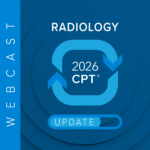Sorting through strident but contradictory opinions can be challenging. Last week, I explained why many new problems for an established patient can be treated as incident-to, notwithstanding what the Medicare Administrative Contractors (MACs) claim.
There is a well-known consultant who strongly disagrees, and whose scorn for my position is quite evident in a lengthy post. Because it is so common to have differing opinions in a highly regulated area, I want to take this time to examine how you can determine who to trust.
The consultant’s critique of my position opens with “this is a topic I know inside and out,” and mention of his experience, as well as his relationship with the Centers for Medicare & Medicaid Services (CMS). But neither the length of time someone has practiced, nor who they know, is evidence of quality analysis. I have been practicing for 33 years, but I would never assert that this makes my answers more accurate. In fact, at times it may make me less reliable, because I might mistakenly assume I know something without verifying it.
When you are trying to figure out who is right, credentials and bragging are irrelevant. Only one thing matters: the text. Actually, two things: the text and whether that text is authoritative. The consultant points to a variety of statements from Novitas and Noridian that do say that a physician must see a patient who has a new problem. The consultant is 100-percent right about that. I acknowledged this last week.
I am asking whether the contractors are correct. To answer, we have to look at the regulation, because regulations are binding unless they contradict a statute or the Constitution. As a quick reminder, the regulation says that the services can be “in the course of diagnosis or treatment of an illness or injury.” The consultant says that the regulation “implies that the service must relate to a diagnosis and treatment plan initiated by the physician.”
Sure. But how does that prevent the diagnosis of new problems as part of the course of treatment? If that phrase isn’t permitting non-physician practitioners (NPPs) to diagnose, then it doesn’t permit them to treat, which would render the whole sentence meaningless. You can’t give meaning to “treatment” while also disregarding “diagnosis.”
Next, the consultant turned to the manuals. A quick reminder that manuals are not binding, so if there were language there undercutting the regulation, it isn’t authoritative. But there isn’t. Nothing in the manual so much as discusses new problems, let alone says they can’t be treated incident-to. Medicare Benefit Policy Manual, Chapter 15, Section 60.1 says, “such a service or supply could be considered to be incident to when furnished during a course of treatment where the physician performs an initial service and subsequent services of a frequency which reflect his/her active participation in and management of the course of treatment.”
Remember that the regulation uses the word diagnosis. The Manual omits that very important word. But still, it does not make any mention of new problems. It is abundantly clear that the physician needn’t be there for a visit, and realistically, how many visits are there with absolutely no new problems?
The consultant’s take: “a new diagnosis requires the physician to perform an initial E&M (evaluation and management) service to establish the diagnosis and plan of care.” He says something like this three different times when summarizing language, but none of the original sources use similar wording.
The Manual says a physician must perform an initial service and subsequent services of a frequency that reflect active participation. My request: show me the words “new problem” in the Manual. You can’t, because they don’t appear.
Now, I want to be clear from a risk-management perspective: someone might choose to follow their contractor even when their contractor is ignoring the law. That’s fine. But this consultant claims to have a defense-oriented view, and to “think outside the box.” Yet his lengthy attack on my argument never addresses my key point: the regulation says that services in the course of diagnosis of the patient are covered. If you are trying to choose which argument is stronger, one strategy is to see how each approaches the position of the other.
When someone is ignoring their opponent’s argument, that is strong evidence that they are wrong. The consultant never even tries to analyze how I am misinterpreting the regulation. He just says that everyone agrees what I am saying is wrong. The way to refute textual analysis is with stronger textual analysis. If you perform an exhaustive search of the federal statutes and regulations, and even of the Medicare manuals, for the words “new problem,” or for anything that says you can’t treat a new problem incident-to, well, U2 will come to mind, singing “I still haven’t found what I’m looking for.” Because it is not there. Everyone who says you can’t treat new problems incident-to is relying bad information from MACs – not a statute, a regulation, or even a manual.













